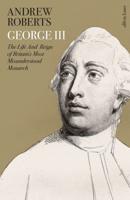Publisher's Synopsis
Excerpt from The New Cyclopædia of Illustrative Anecdote: Religious and Moral, Original and Selected
Tn employment of happy illustration is one of the chief necessary for popular address. Every true orator knows how vain is the attempt to enlist the sympathies of a mixed audience by the mere enunciation of abstract principles or the bare state ment of arguments. He may couch his ideas in language of polished elegance, or may weave his reasoning into a chain of irresistible logic; yet he will fail to touch the heart, or fire the enthusiasm of men, except he can crystallise his thoughts into some happy simile which ?ashes its light on every eye, or can clothe his lessons in some pointed tale which vividly stamps the imlrression he would convey.
Fable, metaphor, parable, anecdote, are all different methods need for this one great end. The fable, constructed from impossible elements-such as animals conversing, &c. - generally illustrates a prudential maxim adapted for common life. The metaphor, in like manner, draws from the region of things material a representation of things moral or spiritual. The parable, again, in its strict sense, is an imaginative tale - possible in itself, though really fictitious - and told for the purpose of simplifying the highest lessons by a species of dramatic appeal. The parable thus di?'ers from the anecdote, which, though similarly used, yet professes to be a true incident.
About the Publisher
Forgotten Books publishes hundreds of thousands of rare and classic books. Find more at www.forgottenbooks.com
This book is a reproduction of an important historical work. Forgotten Books uses state-of-the-art technology to digitally reconstruct the work, preserving the original format whilst repairing imperfections present in the aged copy. In rare cases, an imperfection in the original, such as a blemish or missing page, may be replicated in our edition. We do, however, repair the vast majority of imperfections successfully; any imperfections that remain are intentionally left to preserve the state of such historical works.









